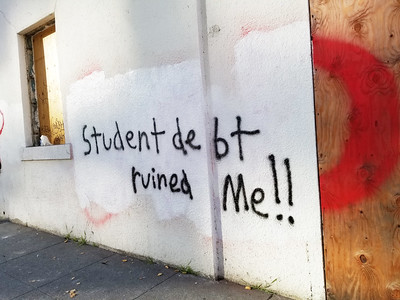The Department of Education will resume collections of student loans at the end of August. As part of the federal government’s pandemic relief strategy, ED paused student loan repayments at the onset of the pandemic. The pause fell victim to the most recent federal debt ceiling negotiations, and as a result, millions of student loan borrowers are expected to begin making loan payments within 60 days.
The Congressional Budget Office estimated that the pause costs the federal government about $5B per month. Simply restarting the program, however, is not as simple as it seems. During the pause, federal student loans did not accumulate any interest charges, so in theory, a borrower’s student loan balance will have remained “frozen” since March 2020.
While student loan balances may not have changed, a lot of other factors have changed around them. Approximately 8% of student loan borrowers in repayment have other non-education debts that they’ve fallen behind on. That doesn’t bode well for ED’s collection prospects. These non-education debts could include credit card debt, car loans, and mortgages. For these borrowers, the majority of whom are in low income households, restarting the student loan collection program may pose a significant hardship.
These non-student loan debts don’t represent trivial costs. Since the student loan payment pause, these debt obligations have risen in cost by nearly 25%. That, combined with inflation, puts added pressure on borrowers’ finances.
With regard to student loan debt loads, 27% of borrowers are in the highest quintile of debt, with balances of $50,000 or more. The second quintile of borrowers (24%) has debts of $10,000 or less. The third quintile of borrowers (19%) has debts of $20,000-$35,000, with a nearly equal number of borrowers (18%) carrying debts of $10,000-$20,000. The smallest quintile of borrowers (11%) owes between $35,000 and $50,000.
Older borrowers owe the most on student loans
The borrowers most affected by student loan debt aren’t those fresh out of college. Nearly half of all student loan borrowers are between the ages of 30 and 49. About one-third of student loan borrowers fall between the ages of 18 and 29. The remainder of those making student loan payments are age 50 or older.
While surely some 50 -year-olds are making payments on their own student loans, borrowers in this age group are more likely to have borrowed money to pay for their children’s college attendance. The student loan repayment restart will affect this group’s ability to save adequately (or at all!) for retirement.
The data are nice, but they point to the fact that student loan borrowers – especially those in lower income brackets – have a hard time managing debt, educational or otherwise. By itself, that’s sufficient reason to avoid asking students to pay for capital construction through tuition increases and ridiculous fees. Instead, it is better to ask the public to pay for construction and infrastructure costs around campus. Students – especially from low-income households – simply cannot afford to take on educational debt that has been bloated by the College’s expensive construction debt.
It will be interesting to see if WCC’s cohort default rate – which had been higher than the national average – rises once student loan payments resume.
Photo Credit: Quinn Dombrowski, via Flickr


















